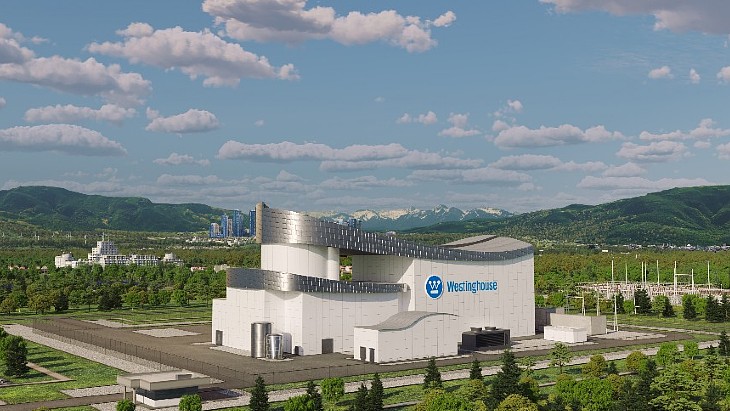Westinghouse unveils AP300 small modular reactor

The AP300 SMR, based on the licensed and operating AP1000 pressurised light water technology, is described as an "ultra-compact, modular constructed unit that leverages the innovation and operational knowledge of the global AP1000 fleet" and will use identical AP1000 technology including "major equipment, structural components, passive safety, proven fuel and I&C systems".
Westinghouse says it is the first SMR "based on an Nth-of-a-kind operating plant" and it hopes to benefit from the design utilising its Gen III+ technology which already has regulatory approval in the USA, UK and China as well as being in compliance with European Utility Requirements.
President and CEO of Westinghouse Patrick Fragman said: "The launch of the AP300 SMR rounds out the Westinghouse portfolio of reactor technology, allowing us to deliver on the full needs of our customers globally, with a clear line of sight on schedule of delivery, and economics."
"It is using the DNA of the AP1000 in terms of technology", he said, with its passive safety systems "which has unique advantages in terms of robustness of the safety case, simplicity of the design, with huge implications in terms of costs and time to construct and obviously an ease of deployment because, with the AP1000 being already deployed, the AP300 SMR will leverage the existing supply chain, the existing design, the existing licensing pedigree".
"It is no more and no less than an AP1000 with one loop instead of two loops - which means it's effectively reusing a majority of components, systems, equipment. The fuel is identical, the constructability lessons are identical," he said.
Westinghouse was bringing "certainty" to the SMR market in terms of a proven design, existing supply chains and economics, he said. Market soundings over recent months and discussions with potential customers had led the company to believe this was an "inflection point" for the market.
In a press conference following the announcement, Westinghouse also said the footprint of the AP300 would be about 25% of the area of a football (soccer) pitch, with a target cost per unit of USD1 billion.
Fragman said that the timeline was aiming to get licensing approval from the US Nuclear Regulatory Commission by 2027 "given the existing maturity of the design and reuse of the building blocks of licensing", followed by three years to get site-specific permissions and a further three years for construction "which means that in 10 years from now the first AP300 SMR will effectively deliver its first power to the grid".
The company believes that the customer base for the SMR will be broader than existing utility customers, and will include uses such as hydrogen production, district heating, water desalination and providing power for data centres.
David Durham, President Energy Systems at Westinghouse, said that the initial licensing focus was on design certification from the NRC: "That's typically the kind of stamp of approval around the world - we will be pursuing, though, licensing in other countries over the coming next couple of years".
Westinghouse has named Rita Baranwal, currently Chief Technology Officer, to lead the team developing the AP300 SMR. Baranwal is a former Assistant Secretary of Nuclear Energy at the US Department of Energy, and a previous director of the Gateway for Accelerated Innovation in Nuclear initiative at Idaho National Lab.
The AP300 SMR will sit between the AP1000 and the eVinci microreactor, a range of products which, the company said, together with other developments, meant Westinghouse was providing "the technology to create a sustainable future and enhance energy security around the globe and eventually in outer space".
There are upwards of 50 different SMRs at various stages of development, with predictions of huge demand to come around the world, with a number of different firms discussing or pencilling orders for them in countries ranging from Poland to the Philippines.
_92619.jpg)

_84504.jpg)







_50521.jpg)

